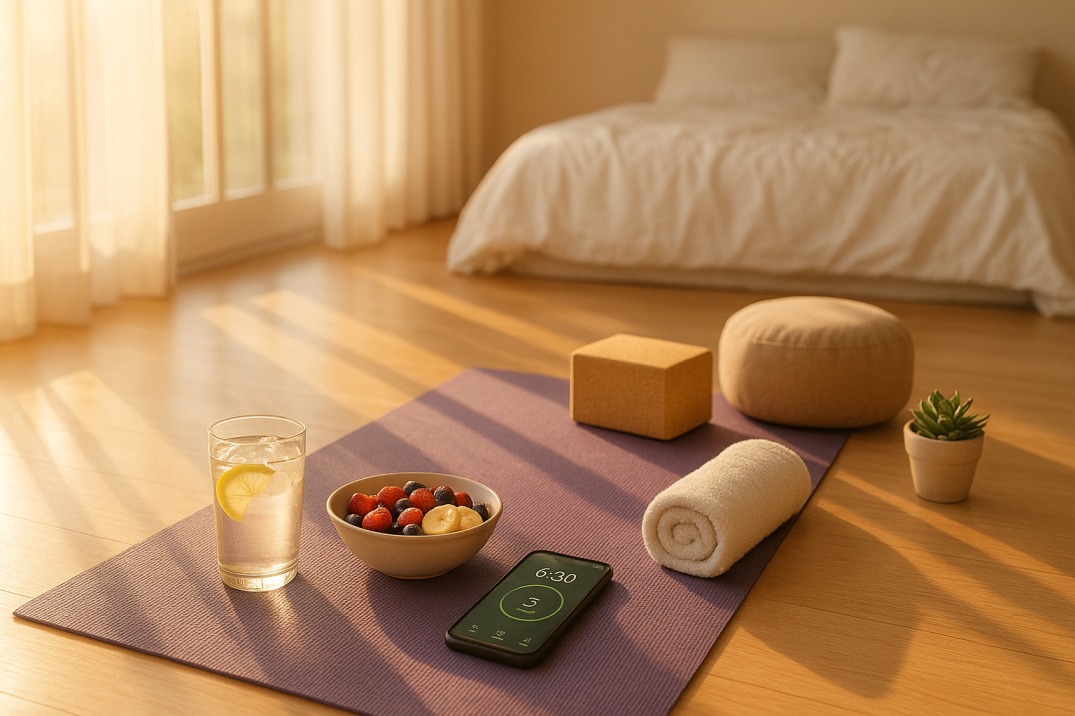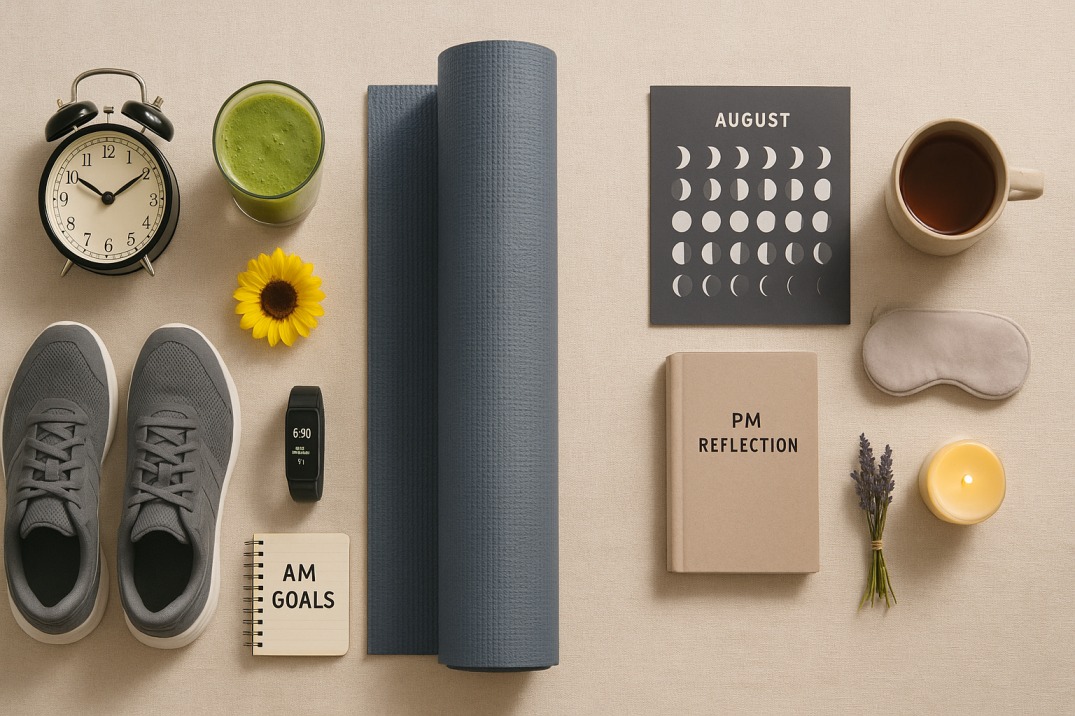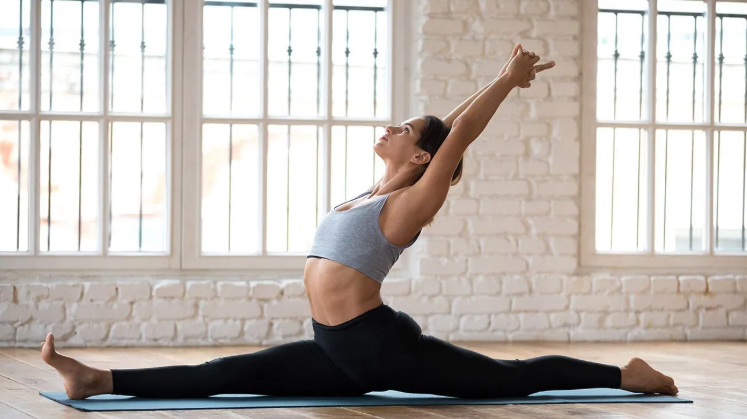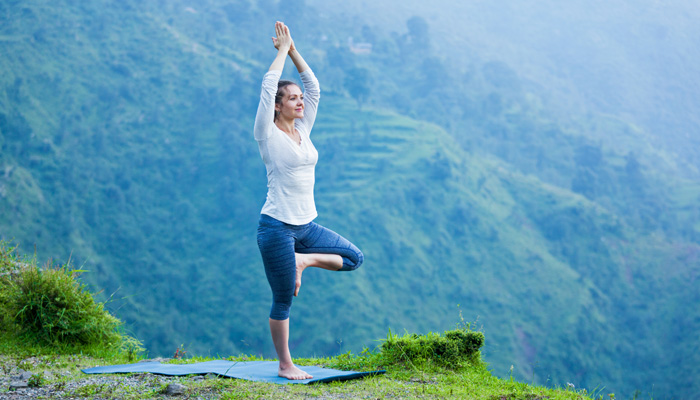When should you roll out your yoga mat—at sunrise or sunset? This age-old debate has a simpler answer than you might think: the best time for yoga is whenever it works best for YOUR body and schedule. Let’s explore the science behind timing your practice to maximize your fitness results.

The Truth About Yoga Timing
Traditional yoga philosophy emphasizes sunrise practice, aligning with Ayurvedic principles of optimal energy flow. However, modern research shows that consistency matters more than clock time. A study published in the International Journal of Yoga found that regular practice—regardless of time—delivers significant health benefits including improved flexibility, strength, and mental clarity.
The key takeaway: Your lifestyle, energy patterns, and personal preferences should guide your decision, not rigid rules.
Morning Yoga: Starting Your Day Right
The Science-Backed Benefits
1. Metabolic Boost
Morning yoga activates your metabolism after overnight fasting. Research in Complementary Therapies in Medicine demonstrates that morning exercise increases metabolic rate by 10-20% for up to 12 hours post-practice.
How it works: Sun salutations and dynamic flows stimulate your cardiovascular system, signaling your body to burn calories more efficiently throughout the day.
2. Enhanced Mental Clarity
A study in the Journal of Physical Activity and Health found that morning exercise significantly improves cognitive function, focus, and decision-making for 4-10 hours afterward.
Fitolympia benefit: Perfect timing if your workouts or important tasks are scheduled later in the day—your morning yoga session primes your brain for peak performance.
3. Hormonal Optimization
Cortisol (your “wake-up hormone”) naturally peaks between 6-8 AM. Morning yoga helps regulate this spike, preventing the anxiety and jitters associated with excess cortisol while maintaining alertness.
4. Consistency Advantage
Studies show that 75% of people who exercise in the morning maintain their routine long-term, compared to only 25% of evening exercisers. Morning practice faces fewer interruptions from work, social obligations, or fatigue.
5. Blood Sugar Regulation
Research in Diabetes Care indicates that morning physical activity improves insulin sensitivity and glucose metabolism throughout the day, particularly beneficial for managing weight and energy levels.

The Challenges
Reduced Flexibility
Your body temperature is lower in the morning—typically 1-2°F below your daily peak. This affects:
- Muscle elasticity (tissues are stiffer)
- Joint lubrication (synovial fluid is less mobile)
- Range of motion (reduced by approximately 20%)
Solution: Extend your warm-up, focus on gentle flows, and avoid forcing deep stretches. Save advanced poses for when your body is warmer.
Not for Night Owls
If you’re naturally wired for late nights, forcing early morning practice can backfire. Research on chronotypes (natural sleep-wake preferences) shows that “evening types” perform significantly worse in early morning activities and experience higher stress hormones.
Evening Yoga: Unwinding with Purpose
The Science-Backed Benefits
1. Peak Physical Performance
Your body temperature peaks between 4-6 PM, resulting in:
- 6% increase in muscle strength
- 5% improvement in flexibility
- Enhanced coordination and reaction time
- Reduced injury risk
A meta-analysis in Sports Medicine confirms that physical performance peaks in late afternoon/early evening for most people.
2. Superior Flexibility
With elevated body temperature and 12+ hours of movement, your muscles and connective tissues are at their most pliable. This is ideal for:
- Deep stretches and advanced poses
- Hip openers and backbends
- Working on challenging flexibility goals
3. Stress Reduction & Sleep Quality
Research in Journal of Alternative and Complementary Medicine shows that evening yoga (completed 2+ hours before bed) significantly improves:
- Sleep onset time (fall asleep 35% faster)
- Sleep quality scores
- REM cycle duration
- Next-day alertness
How it works: Evening practice activates your parasympathetic nervous system, triggering relaxation hormones like melatonin and reducing stress hormones.

4. Enhanced Digestion
Gentle evening yoga aids digestion through:
- Increased blood flow to digestive organs
- Gentle compression and twisting poses
- Stress reduction (stress inhibits digestion)
Studies show that yoga practiced 2-3 hours after dinner can alleviate bloating and improve gut motility.
5. More Energy Available
After consuming meals and staying active all day, most people have more readily available energy reserves in the evening compared to the fasted, just-awakened state of morning.
The Challenges
Sleep Disruption Risk
Vigorous evening yoga (especially power yoga or hot yoga) can interfere with sleep if practiced too close to bedtime. High-intensity practice:
- Elevates core body temperature
- Increases cortisol and adrenaline
- Stimulates the sympathetic nervous system
The fix: Complete intense sessions at least 3 hours before bed, or switch to gentle, restorative practices in the evening.
Mental Hyperactivity
Evening practice can sometimes overstimulate an already active mind, making it harder to wind down. This is particularly true for:
- Power yoga styles
- Complex sequences requiring focus
- Challenging balance poses
Solution: Transition to calming practices (yin yoga, yoga nidra, or gentle hatha) for evening sessions.
Scheduling Conflicts
Evening practice often competes with:
- Work obligations
- Social commitments
- Family responsibilities
- Fatigue from the day
Making Your Decision: A Practical Framework

Choose Morning Yoga If You:
✅ Are naturally a morning person (early chronotype)
✅ Want to boost metabolism and energy for the day
✅ Struggle with consistency and need fewer scheduling conflicts
✅ Have important cognitive tasks later in the day
✅ Want to regulate appetite and blood sugar
✅ Prefer starting your day with intention and calm
Best morning styles: Vinyasa flow, Sun Salutations, Power yoga, Ashtanga
Choose Evening Yoga If You:
✅ Are a night owl (late chronotype)
✅ Want maximum flexibility and physical performance
✅ Need stress relief and better sleep quality
✅ Have more energy in the afternoon/evening
✅ Want to aid digestion after meals
✅ Prefer unwinding after a long day
Best evening styles: Hatha, Yin yoga, Restorative yoga, Gentle flow, Yoga Nidra
The Fitolympia Approach: Hybrid Training
Many successful practitioners combine both:
Morning (15-20 min): Energizing flow to boost metabolism and set intentions Evening (30-45 min): Deeper practice for flexibility, strength, and stress relief
This approach maximizes benefits from both time periods while maintaining consistency.
Critical Timing Rules (Everyone Should Follow)
The 2-Hour Rule
Never practice yoga immediately after meals. Here’s why:
According to research in Digestive Diseases and Sciences:
- Digestion requires significant blood flow to your stomach and intestines
- Exercise diverts blood to muscles, competing with digestion
- This causes cramping, nausea, and reduced nutrient absorption
Wait times:
- Light snack: 1-2 hours
- Regular meal: 2-3 hours
- Heavy meal: 3-4 hours
Hydration Timing
- Drink water 30-45 minutes before practice
- Sip minimally during practice
- Rehydrate fully afterward
Consider Your Other Workouts
If you’re following a Fitolympia strength or cardio program:
- Separate yoga from intense workouts by 6+ hours when possible
- Use morning yoga as an active warm-up before gym sessions
- Use evening yoga for recovery on strength training days
Optimizing Your Practice (Regardless of Time)
1. Create a Dedicated Space
- Quiet, clutter-free area
- Good ventilation
- Comfortable temperature
- Minimal distractions
2. Consistency Over Perfection The Journal of Clinical Psychology found that practicing at the same time daily creates habit automaticity—your routine becomes effortless within 66 days on average.
3. Listen to Your Body Track your energy, flexibility, and mental state at different times. Your ideal timing might shift with:
- Seasons
- Work schedules
- Life circumstances
- Fitness goals
4. Quality Over Duration A focused 20-minute practice beats a distracted 60-minute session. Research confirms that mindful, present practice delivers greater benefits than longer, unfocused sessions.
The Bottom Line
There’s no universally “best” time for yoga—only the best time for YOU. The most important factors are:
- Consistency: Regular practice matters more than perfect timing
- Energy alignment: Practice when you feel motivated and capable
- Goal-specific timing: Match your practice time to your fitness objectives
- Lifestyle integration: Choose a time that fits sustainably into your routine
Whether you’re a sunrise warrior or a sunset stretcher, honor your body’s natural rhythms. The ancient practice of yoga is flexible enough to adapt to modern life—and so are you.
Sources
- Gothe, N.P., et al. “Yoga Effects on Brain Health: A Systematic Review of the Current Literature.” Brain Plasticity, 2019.
- Chastin, S.F., et al. “Meta-Analysis of the Relationship Between Breaks in Sedentary Behavior and Cardiometabolic Health.” Obesity, 2015.
- Atkinson, G., & Reilly, T. “Circadian Variation in Sports Performance.” Sports Medicine, 1996.
- Khalsa, S.B. “Treatment of Chronic Insomnia with Yoga: A Preliminary Study.” Journal of Alternative and Complementary Medicine, 2004.
- Woodyard, C. “Exploring the Therapeutic Effects of Yoga and its Ability to Increase Quality of Life.” International Journal of Yoga, 2011.
- Brandenberger, G., et al. “Effect of Timing and Intensity of Exercise on Glucose Homeostasis.” Diabetes Care, 2005.
Disclaimer: This article provides general fitness information and should not replace professional medical or fitness advice. Consult healthcare providers or certified yoga instructors for personalized guidance.


